Related Research Articles

Marie Antoinette Josèphe Jeanne was the last queen of France before the French Revolution. She was born an archduchess of Austria and was the penultimate child and youngest daughter of Empress Maria Theresa and Emperor Francis I. She became dauphine of France in May 1770 at age 14 upon her marriage to Louis-Auguste, heir apparent to the French throne. On 10 May 1774, her husband ascended the throne as Louis XVI and she became queen.

Jeanne Bécu, Comtesse du Barry was the last Maîtresse-en-titre of Louis XV of France and one of the victims of the Reign of Terror during the French Revolution.
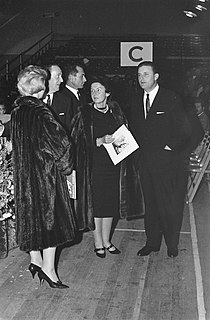
Princess Antoinette, Baroness of Massy was a member of the princely family of Monaco. She was the elder sister of Prince Rainier III. Her parents were Count Pierre de Polignac and Princess Charlotte, Duchess of Valentinois.

A ménage à trois is a domestic arrangement with three people sharing romantic or sexual relations with one another, and typically dwelling together. The phrase is a loan from French meaning "household of three". A form of polyamory, contemporary arrangements are sometimes identified as a throuple, thruple, or triad.

Barbara Woolworth Hutton was an American debutante, socialite, heiress, and philanthropist. She was dubbed the "Poor Little Rich Girl": first when she was given a lavish and expensive debutante ball in 1930 amid the Great Depression, and later due to a notoriously troubled private life.

Yolande Martine Gabrielle de Polastron, Duchess of Polignac was the favourite of Marie Antoinette, whom she first met when she was presented at the Palace of Versailles in 1775, the year after Marie Antoinette became the Queen of France. She was considered one of the great beauties of pre-Revolutionary society, but her extravagance and exclusivity earned her many enemies.

Marie-Thérèse, Duchess of Angoulême was the eldest child of Louis XVI and Marie Antoinette, and the only one to reach adulthood. She was married to Louis Antoine, Duke of Angoulême, who was the eldest son of the future Charles X, her father's younger brother; thus the bride and groom were also first cousins.
Anna Wickham was the pseudonym of Edith Alice Mary Harper, an English/Australian poet who was a pioneer of modernist poetry, and one of the most important female poets writing during the first half of the twentieth century. She was friend to other important writers of the time, such as D. H. Lawrence, George Bernard Shaw, Katherine Mansfield and Dylan Thomas. Wickham lived a transnational, unconventional life, moving between Australia, England and France. She is remembered as a modernist figure and feminist writer, although one who did not command sustained critical attention in her lifetime, although her poetry did earn her a major reputation at the time of writing and had been frequently anthologised. Her literary reputation has improved since her death and she is now regarded as an important early 20th-century woman writer.
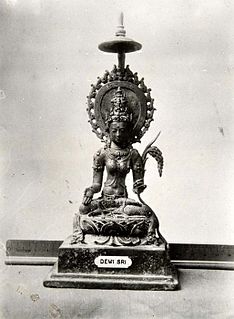
Kakawin Ramayana is an Old Javanese poem rendering of the Sanskrit Ramayana in kakawin meter.

Marie-Thérèse Walter was the French model and lover of Pablo Picasso from 1927 to about 1935 and the mother of their daughter Maya Widmaier-Picasso. Their relationship began when she was seventeen years old; he was 45 and still living with his first wife, Olga Khokhlova. It ended when Picasso moved on to his next relationship, with artist Dora Maar.
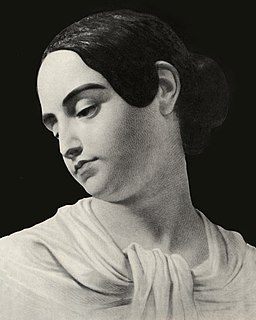
Virginia Eliza Clemm Poe was the wife of American writer Edgar Allan Poe. The couple were first cousins and publicly married when Virginia Clemm was 13 and Poe was 27. Biographers disagree as to the nature of the couple's relationship. Though their marriage was loving, some biographers suggest they viewed one another more like a brother and sister. In January 1842, she contracted tuberculosis, growing worse for five years until she died of the disease at the age of 24 in the family's cottage, at that time outside New York City.
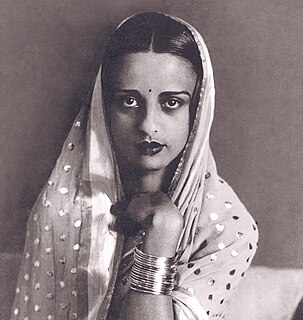
Amrita Sher-Gil was a Hungarian-Indian painter. She has been called "one of the greatest avant-garde women artists of the early 20th century" and a "pioneer" in modern Indian art. Drawn to painting from an early age, Sher-Gil started getting formal lessons in the art, at the age of eight. She first gained recognition at the age of 19, for her oil painting titled Young Girls (1932). Sher-Gil depicted everyday life of the people in her paintings.

Marjorie Jewel "Marlow" Moss was a British Constructivist artist who worked in painting and sculpture.

Harry Benham was an American silent film actor.

Maria Caterina Brignole was Princess consort of Monaco by marriage to Honoré III, Prince of Monaco.
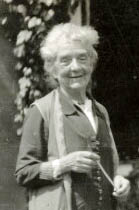
Emma Mary Sargant Florence was a British painter of figure subjects, mural decorations in fresco and occasional landscapes in watercolour and pastel.

Princess Marie Thérèse Louise of Savoy was a member of the Savoy-Carignano cadet branch of the House of Savoy. She was married at the age of 17 to Louis Alexandre de Bourbon-Penthièvre, Prince de Lamballe, the heir to the greatest fortune in France. After her marriage, which lasted a year, she went to court and became the confidante of Queen Marie Antoinette. She was killed in the massacres of September 1792 during the French Revolution.

Willemijn Posthumus-van der Goot was a Dutch economist, feminist and radio broadcaster. As the first woman to attain a doctorate in economics in The Netherlands, her work focused on the impact of working women on the economy. Recognizing that there were few sources, she joined with other feminists to create the International Archives for the Women's Movement in 1935. Writing reports on women's work, she refuted government claims that women working outside the home was of no benefit. First proposed in 1939, the Household Council, which she saw as an organization to foster training and organize domestic laborers was instituted in 1950. She founded the International Association of Women in Radio, as an organization for professional development and networking in 1949. As a peace activist, she was involved in the promotion of pacifism and believing women had unique qualities for solving world problems, she established the International Scientific Institute for Feminine Interpretation. In 1982, in recognition of her significant contributions to the Dutch Women's Movement, Posthumus-van der Goot was appointed as an officer in the Order of Orange-Nassau. In 2008, she, her husband and sister, were honored as Righteous Among the Nations by the government of Israel, for their fostering children during the Dutch occupation by the Nazis.
Les trois souhaits, ou Les vicissitudes de le vie, H. 175, The three wishes, or life's tribulations, Czech Tři přání, is a film opera by Bohuslav Martinů to a libretto by Georges Ribemont-Dessaignes. Composed mainly in Paris between autumn 1928 and May 1929, it was not premiered until June 1971 at the State Theatre, Brno. Grove describes the work as "one of the composer's most experimental works, blending film with stage action", and as "a mature drama" it is "comparable in theatrical impact to many of Martinů's later operas".
Nancy van Overveldt, born Nancy Wilhelmina Scheffer was a Dutch-Mexican artist. Van Overveldt worked with Mathías Goeritz, Pedro Friedeberg and Angela Gurría, among other modernistas solitarios from the Generación de la Ruptura.
References
- ↑ Parker, Alan; Willhardt, Mark (2005). Who's Who in Twentieth Century World Poetry. Routledge. p. 234. ISBN 1134713762 . Retrieved 26 December 2017.
- 1 2 3 Antoinette Hendrika Nijhoff-Wind. Zeeuws Documentatiecentrum. 2009. Retrieved 26 December 2017.
- 1 2 3 Nijhoff, A. H. (1962). Marlow Moss. Amsterdam: Stedelijk Museum.